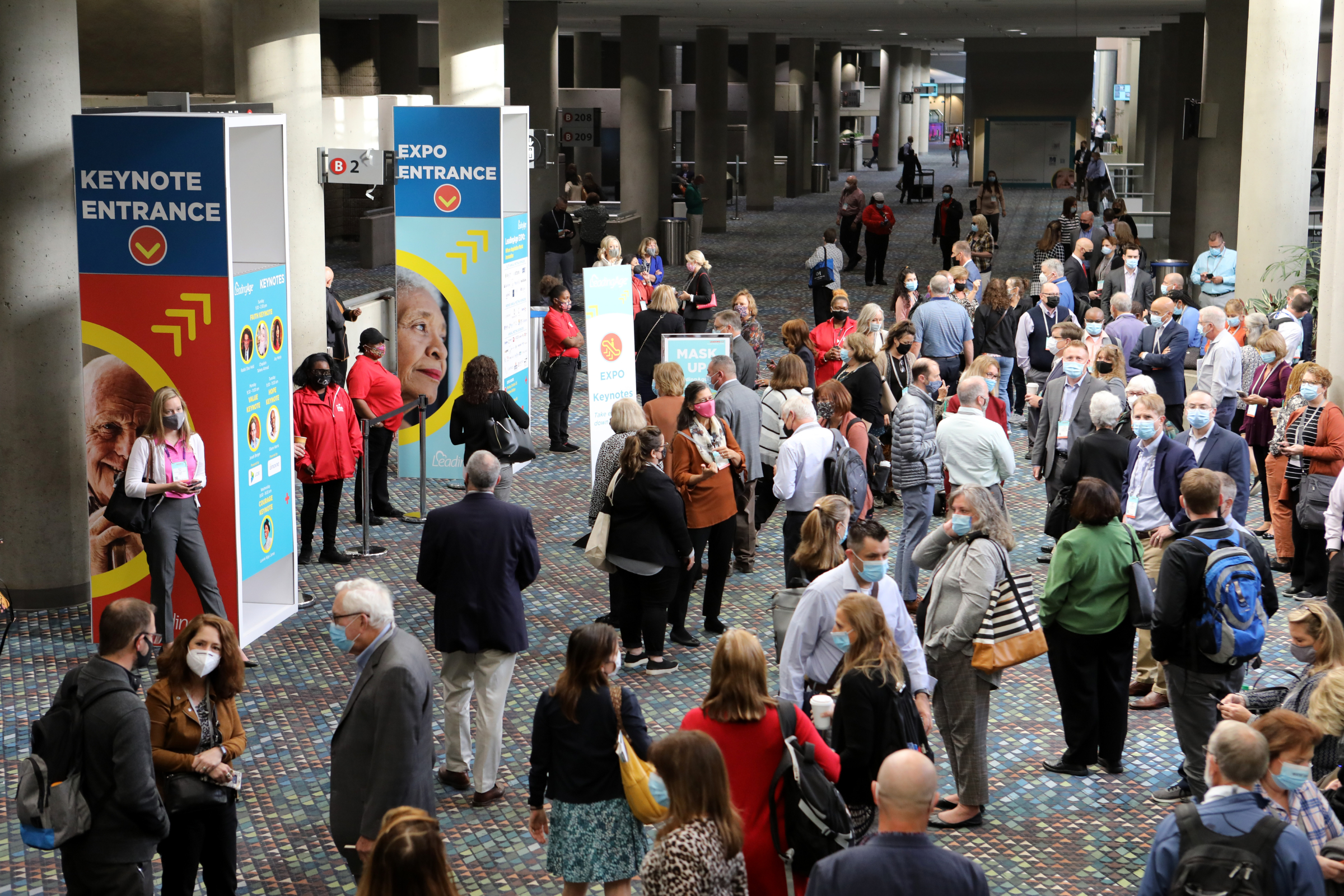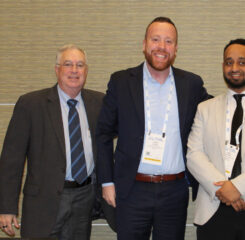LeadingAge Housing Survey Shows Less COVID, More Workforce Challenges
The results are in! The latest LeadingAge quarterly survey of affordable housing providers shows lower COVID-19 cases among residents at affordable senior housing communities across the country, but higher rates of COVID-19 among staff and persistent challenges in hiring and retaining Service Coordinators and other staff. Workforce challenges, resident mental health, and property insurance rates remain among the top concerns for housing providers.
The survey was opened in late March and captured insight dating back to December 2021. The survey, which LeadingAge opens to federally-assisted senior housing provider members nationwide each quarter, provides an informal pulse-check on topics ranging from the physical and mental wellbeing of residents; property financials and contract renewals; HUD compliance and oversight; and staffing challenges among housing providers.
Pandemic Impacts
According to the informal LeadingAge survey, the rates of COVID-19 among HUD-assisted senior housing residents have eased in the past quarter. In response to the question, “are you aware of confirmed COVID-19 cases in your property/ies?” 41% of respondents reported no known cases at properties, up from 29% in December.
The impact of COVID-19 on property financials remains flat, with roughly the same percentage of respondents reporting severe cost burdens due to the pandemic (9% reporting severe cost burdens, with 46% reporting general cost burdens).
Most survey respondents are seeing continued COVID-19 impacts on occupancy, with more than half reporting higher vacancy rates due to the pandemic. Despite increased occupancy challenges, 84% of respondents reported vacancy rates below 4% (up from 75% of respondents in December). The survey also showed that the majority of properties have an estimated waitlist of 1 – 5 or more years.
Key Take-Aways:
- 41% reporting no known cases, up from 29%
- 55% reporting general cost burdens resulting from COVID-19
- Despite pandemic occupancy challenges, 84% of respondents have a waitlist of at least one year
Boosters and Vaccine Requirements
The survey showed high rates of confidence in both resident and staff vaccination rates, with most respondents estimating more than 80% of residents and staff are fully vaccinated and up-to-date (including boosters). Nearly two-thirds (62%) of the affordable senior housing communities represented in the survey have either a vaccination requirement or a vaccination/regular testing requirement in place for staff.
While December’s survey showed that some properties were still considering implementing a vaccination/testing requirement, the current survey showed less than 2% of respondents still undecided/considering a requirement.
Key Take-Aways:
- The majority of respondents estimate more than 80% of residents and staff are fully vaccinated, including boosters
- Two-thirds of housing providers who responded have a vaccine (or testing) requirement in place for staff
Staffing and Workforce
When asked what was expected to be the top operational challenge in the next three months, affordable senior housing providers overwhelmingly reported staffing and workforce – over other answer options, including financial challenges and vacancy issues. The next most common answer was inspections and maintenance, followed by resident mental health.
Asked more specifically about staffing issues, housing providers increasingly reported challenges with staffing levels (a stark 71% said they struggled with staffing levels in the past three months, compared to 50% who reported similar challenges in December). Respondents also reported an increasing number of confirmed cases among staff, low morale, and personal circumstances impacting productivity.
Key Take-Aways:
- Respondents reported staffing/workforce issues as their top expected operational challenge in the next quarter, followed by inspections/maintenance and resident mental health
- The number of survey respondents who reported concern with staffing levels rose more than 20% in since the last quarter
Service Coordinator Hiring and Retention
This quarter, the survey featured a number of targeted questions about Service Coordinator positions at senior housing communities. While 60% of respondents said it takes 2-4 months to fill an open Service Coordinator position, more than 30% said it takes longer than 5 months.
Those who experienced challenges filling the position reported the HUD-approved budget, including a low salary amount, as the barrier, followed by a lack of qualified applicants. Most Service Coordinators who left their jobs said they were seeking higher pay and more work from home flexibility. Roughly 15% of Service Coordinators leaving their jobs attributed it to a vaccine requirement.
Key Take-Aways:
- 60% say 2-4 months to fill an open RSC position, with more than 30% reporting more than 5 month
- HUD-limited salaries makes it most difficult to hire, followed by a lack of qualified applicants
- Most Service Coordinators leaving say they are seeking higher pay and prefer work from home flexibility
Homeless and HIV/AIDS
The survey also asked targeted questions about communities serving older adults who have experienced homelessness or have an HIV/AIDS diagnosis. More than half (52%) reported serving the same number as ever of older adults experiencing homelessness, while nearly 20% report serving more and more. Around 30% of respondents said they are partnering with a Continuum of Care or other homeless services agency and another 24% said they would consider a partnership if they were more familiar with the homeless services system.
More than two-thirds of survey respondents were not aware that older adults with an HIV/AIDS diagnosis live in (or apply to live in the community.
Key Take-Aways:
- Nearly 20% of respondents report serving more and more older adults experiencing homelessness
- 30% say they are currently partnering with a homeless services agency, and another 24% would consider such a partnership
Insurance rates
LeadingAge has been working with HUD, affordable housing members, and insurance brokers to bring down the cost of property liability insurance rates and related costs. While some respondents reported increases of more than 30%, nearly 40% reported an increase of between 10-30%.
The level of concern among housing providers is clear: 95% of survey respondents say that are concerns about insurance cost increases and/or coverage losses. Of those, 53% said they are very concerned.
LeadingAge is hosting our next member call on the insurance cost issue in early June. Reach out to Juliana (jbilowich@leadingage.org) for more information.
Key Take-Aways:
- Nearly 40% of respondents report an insurance cost increase of between 10-30%
- 95% of survey respondents are concerned about insurance cost increases and coverage losses, including 53% saying they are “very concerned”
Thanks to all of our members who completed the survey this quarter. The full results are available here, including questions about PRAC renewals and internet access at properties.

Most Recommended
October 15, 2025
 Shutdown Week Three: Impact of Ongoing Closure on Affordable Housing
Shutdown Week Three: Impact of Ongoing Closure on Affordable Housing
December 10, 2025
Fiscal Year (FY) Funding 2026
October 07, 2025
Immigrant Workforce Matching Program Brings Workforce Relief
Recently Added
December 15, 2025
CAST Members in the News
December 15, 2025



